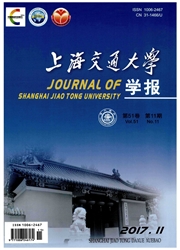

 中文摘要:
中文摘要:
针对人工室内环境的同时定位与构图(SLAM)问题,将元胞自动机(CA)引入到传统SLAM算法的迭代过程,建立“SLAM-CA生长-重定位”的闭环作用机制。利用室内规则环境的特性,以及大多数室内机器人应用领域已知先验地图的特点,对室内SLAM问题开展针对性的研究。通过仿真与实验证明,针对人工室内环境,该算法使得墙壁、出入口与直角特征更加明显,“穿墙”现象得到一定程度解决,改善了构图效果,提高了定位精度和路径规划可行性。
 英文摘要:
英文摘要:
To improve simultaneous localization and mapping (SLAM) in indoor environments, the cellular automata (CA) is introduced into the iterative process of traditional SLAM algorithm and“SLAM-CA-relocation”closed-loop mechanism is established. Based on the characteristics of the regular indoor environment and a priori map in most mobile robot applications, the indoor SLAM problem is further studied. In the simulations and experiments in artificial indoor environments, the features of wall, exit, doors and right-angle parts become more clear, the problem of“through walls”is solved to some extent, the mapping quality is improved, the localization precision is increased, and the feasibility of path planning is also enhanced.
 同期刊论文项目
同期刊论文项目
 同项目期刊论文
同项目期刊论文
 期刊信息
期刊信息
